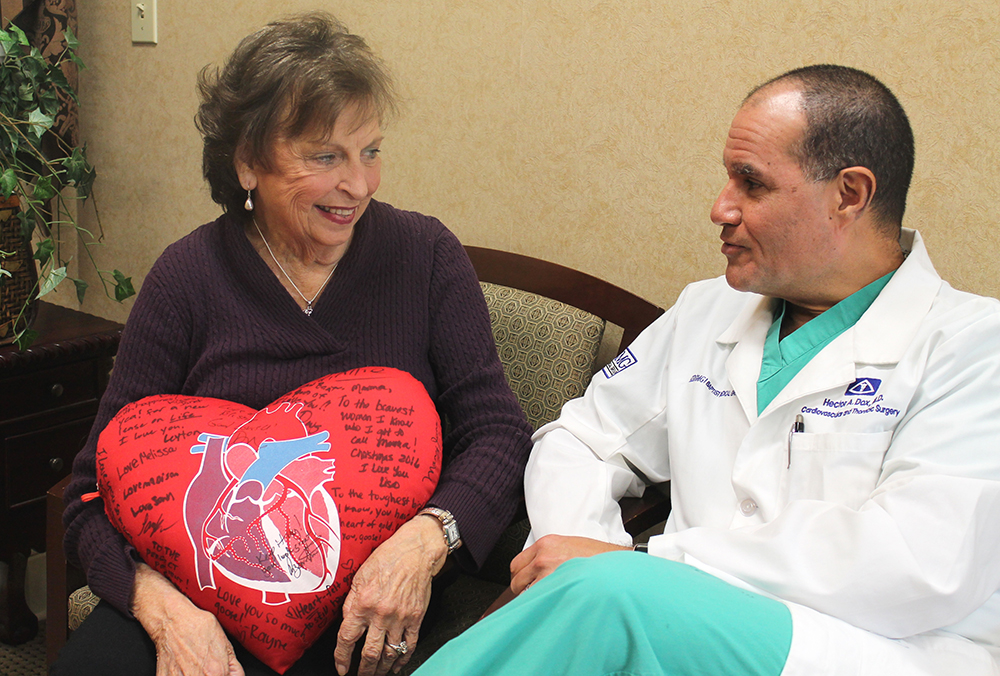Columbus, MS Woman First to Receive Two-Procedure Heart Surgery at Baptist Golden Triangle

Ten years ago, Lucy Phillips was hit by a woman who ran a red light. She sustained a broken collar bone, but during her CAT scan the emergency room doctor also found an aneurysm. Completely unaware of it at the time, Lucy had a weakness in the wall of the ascending aortic artery in her heart that she had been living with for close to a decade.
Because the aneurysm was so small, her doctor instructed her to keep an eye on it each year. By 2016, the aneurysm had grown to 5.4 centimeters – just over the size that doctors recommend having the artery repaired. It was explained to Lucy that she had a faulty aortic valve that was causing the aneurysm to grow more rapidly.
Lucy was referred to Dr. Hector Dox, a cardiothoracic surgeon at Baptist Memorial Hospital – Golden Triangle. He recommended surgery, during which she would need the aneurysm repaired and her aortic valve replaced. This two-procedure heart surgery had never been done at Baptist Golden Triangle, but Dr. Dox had performed it 200 to 300 times before in his career.
Aneurysms are often called the “silent killer” because most people, like Lucy, don’t know that they have one until it is too late. Chest pain is the most common symptom, but by the time people experience it, the artery is likely already leaking or ruptured. By this point, the chance of survival drops drastically.
After meeting with Dr. Dox, Lucy was impressed by his confidence and expertise and agreed to let him perform the operation. During surgery, it was found that her aneurysm had grown to 5.8 centimeters. She was on the heart bypass machine for a little over two hours of the four-and-a-half-hour surgery, and returned home in time to celebrate the Thanksgiving holiday with her loved ones.
Knowing what symptoms to look for and what questions to ask your doctor is one of the best ways to take control of your heart health. Early detection is key for issues like aneurysms, so speak with your doctor today to learn what you can be doing to lower your risk for heart disease.
